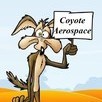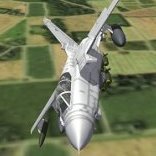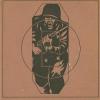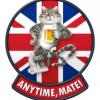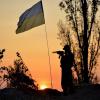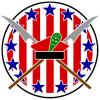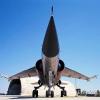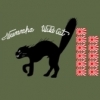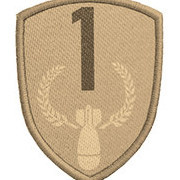Leaderboard
Popular Content
Showing most liked content on 06/28/2019 in all areas
-
16 points
Version 1.0.0
686 downloads
The Tupolev Tu-160 'White Swan'; NATO reporting name: Blackjack) is a supersonic, variable-sweep wing heavy strategic bomber designed by the Tupolev Design Bureau in the Soviet Union. It is the largest and heaviest Mach 2+ supersonic military aircraft ever built and second only to the comparable XB-70 Valkyrie in overall length.It is the largest and heaviest combat aircraft, the fastest bomber now in use and the largest and heaviest variable-sweep wing airplane ever flown. Entering service in 1987, the Tu-160 was the last strategic bomber designed for the Soviet Union. As of 2016, the Russian Air Force's Long Range Aviation branch has at least 16 aircraft in service. The Tu-160 active fleet has been undergoing upgrades to electronics systems since the early 2000s. The Tu-160M modernisation programme has begun with the first updated aircraft delivered in December 2014. aircraft model by Veltro2k: Apr 2014 pilot models by The Trooper: Feb 2009 textures and decals by Charles: June 2019 flight model by Charles: June 2019 destroyed model (B-1B) by Klavs81, Dels and FastCargo cockpit (B-1B) by Dels: Sept 2010 Best Sim : Thirdwire unzip ad folders to their appropiate places...have fun THIS MODEL IS ONLY TO BE DISTRIBUTED AS FREEWARE AND IN NO OTHER CIRCUMSTANCE SHALL IT BE USED, EVEN IN PART OF ANYTHING THAT IS PAYWARE. IN ACCORDANCE WITH THE COMBAT ACE MODDERS AGREEMENT -
9 points
-
7 points
-
3 points
-
3 pointsI think most of us are still here, I sort of swap between FE and SF, particularly on the skinning side, I have a couple of re skinn projects in the works, as I mentioned to stephen pre Xmas, however I had a catastrophic Vid card failure and it took me a couple of months to get a new one, as I say I alternate between the 2 sims , because they are both great, looking forward to your next gen FM's Von S, they are always greatly appreciated !! Yes a Bleriot would be VERY VERY VERY nice indeed, an opposite number to Stephens excellent Taube, We could also do ( and I know I sound like a scratched record here ) new Longhorns and Shorthorns for the early war period, again I have Stephens "new" Farmans, and very delightful they are too !! but some early war stuff would be really nice HINT HINT ( too subtle for ya ? ) So Witeknight fear not we are still here and involved even if somewhat quiet at the moment
-
3 pointsno worries...salvaging my lost model of this...hawker..navy version..other 2 versions are ok.....it was incomplete.and its temps...temps done...just re mapping odd bits of other version Hawkers to make the naval one... had to remake a few bits and salvaged some from game....lost fuel probe...got it back...and had to make some more changes to get it back like one in pics,this where mues lod viewer invaluable...looking at old lod to see how I mapped bits and what I need remake...much easier
-
2 pointsView File TU-160 Blackjack(V2K) The Tupolev Tu-160 'White Swan'; NATO reporting name: Blackjack) is a supersonic, variable-sweep wing heavy strategic bomber designed by the Tupolev Design Bureau in the Soviet Union. It is the largest and heaviest Mach 2+ supersonic military aircraft ever built and second only to the comparable XB-70 Valkyrie in overall length.It is the largest and heaviest combat aircraft, the fastest bomber now in use and the largest and heaviest variable-sweep wing airplane ever flown. Entering service in 1987, the Tu-160 was the last strategic bomber designed for the Soviet Union. As of 2016, the Russian Air Force's Long Range Aviation branch has at least 16 aircraft in service. The Tu-160 active fleet has been undergoing upgrades to electronics systems since the early 2000s. The Tu-160M modernisation programme has begun with the first updated aircraft delivered in December 2014. aircraft model by Veltro2k: Apr 2014 pilot models by The Trooper: Feb 2009 textures and decals by Charles: June 2019 flight model by Charles: June 2019 destroyed model (B-1B) by Klavs81, Dels and FastCargo cockpit (B-1B) by Dels: Sept 2010 Best Sim : Thirdwire unzip ad folders to their appropiate places...have fun THIS MODEL IS ONLY TO BE DISTRIBUTED AS FREEWARE AND IN NO OTHER CIRCUMSTANCE SHALL IT BE USED, EVEN IN PART OF ANYTHING THAT IS PAYWARE. IN ACCORDANCE WITH THE COMBAT ACE MODDERS AGREEMENT Submitter Veltro2k Submitted 06/27/2019 Category Other
-
2 pointsthat did the trick. like I said, i don't know how to work this thing!! Russ I'll send the whole thing along to you in a day or so thanks!
-
1 pointThe prologue 'Not really a mission report', you might say, but I was 'a man on a mission' in this case, and there is a strong combat sim connection! Like reading up on the subject, a museum visit can be a great way of deepening your ‘feel’ for the historical background of a sim you’re playing...thereby enhancing that semi-mystical quality called 'immersion'. I’ve been playing A2A’s most excellent Battle of Britain II solidly now for about six months, which has spurred me to expand my stock of books on the subject. And I enthusiastically grabbed the chance proffered by a short break in London last week to pick and plan some related museums to visit. Online research soon identified the two I most wanted to see and this report records and illustrates the first of my visits. I hope it and the one to follow will be of interest to anyone contemplating doing likewise, or those too far away to do so, and a useful supplement to the museums' own sites - which for Bentley Priory, you can find here. The 1969 film Battle of Britain has many memorable moments. For me, one of those moments is right at the end. Lawrence Olivier, playing Air Chief Marshall Sir Hugh Dowding - head of RAF Fighter Command and architect of the defensive system that nowadays bears his name – walks out of his office at Fighter Command HQ and onto the veranda. The tide has turned and he can sense his battle has finally been won. He looks out across the beautiful gardens, south towards London, like his own command bombed but not broken. The camera follows his gaze, up into the blue sky, as Ron Goodwin’s majestic main theme wells up. Churchill’s famous tribute to ‘the Few’ is displayed, and the credits begin to roll, starting with the Battle’s real participants and their casualties. The scene was of course filmed at the real HQ at Bentley Priory. Finding that it was now a museum, open to the public, I was quietly thrilled to think that I might see Dowding’s office, stand on that veranda and savour that same view – walking in the footsteps not only of ‘Sir Larry’, but also of Hugh Caswall Tremenheere Dowding, the great man himself. I’ll try to avoid duplicating here what you can readily find in the museum’s own website, and concentrate on what I saw when I went there. I had three nights at the St Giles Hotel at the bottom of Tottenham Court Road, a few yards from the junction with Oxford Street with the Centre Point block just across the road and the Post Office Tower behind the hotel on the other side. Bentley Priory was open ten till five (four, October to February) but only on one of the days of my stay – the Monday – so it was then, or never. I took the London Underground aka ‘Tube’ from Bond Street station a short walk away. Bentley Priory is in Stanmore, right out in ‘the leafy suburbs’, and the last station on the Tube’s Jubilee Line. You can walk the last mile or so, mostly uphill, but I jumped on a number 142 double-decker London bus at the stop immediately outside Stanmore station. The whole journey took over an hour each way, with about the last half of the Tube part out in the open, which is a bit less wearing, and more interesting, than being whirled along noisily in a tunnel. As a sop to any railway fans reading this, this is Stanmore station looking north. The station is used by conventional ‘overground’ trains as well as the Tube, all third rail electrified and operated by London Transport – or Transport for London aka TfL, somebody having decided such a rebrand was worth the cost and effort. Marketing and design companies must have seen them coming, as the saying goes. Those bright red buses can be seen a long way off. The visit - outside in The 142 service bus’s PA announces the museum stop, so I had no worries about when to hop off. The problem came when I turned left onto the drive leading to the museum, for it was sealed behind closed and apparently locked black iron gates. A carload of visitors prompted the (civilian) security chappie to emerge from the nearby gatehouse, letting me in too and allaying my fears that I had got the opening days wrong. The drive curved off to the left, and coming around the corner I stopped to savour my first real-life view of the former Headquarters of RAF Fighter Command. The building is surrounded, mostly at a respectful distance, by upmarket housing built or clad in similar fashion (sandstone?) to the Priory, and you can’t wander off too far before seeing signs saying ‘Residents only’. Apparently, like many such buildings, the Priory was camouflaged dark green and dark earth on the outbreak of World War 2, but this wasn’t reproduced in the film and the museum has sensibly chosen not to deface the fine building for the sake of turning the clock back. Of course, my first stop was the two aircraft prominently displayed outside. There seems to be a significant market for fiberglass replica Spitfire and Hurricane ‘gate guardians’ these days, and my first few minutes were spent photographing these two at Bentley Priory. The Spit apparently replaced a real one, of a later mark, since restored to flying condition. The replica looks well, although purists might find minor faults here or there. I wasn’t interested in rivet-counting or nit-picking. Those over-wing Type B roundels do look a tad small, though... Having built the Revell 1/32 Spit in the 1970s, I naturally recognised the squadron codes as belonging to 610 ‘County of Chester’ Squadron. There’s a plaque in front telling you the replica represents the aircraft flown by Cyril Bamberger. On the other side of the big pine tree is the replica Hurricane. As the plaque says, this one is in the markings of a machine flown during the Battle by Pete Brothers of 32 Squadron, complete with that unit's oversized code letters. Even though I knew these weren’t real aircraft, they made a suitable impression and of course I could not resist getting plenty of pics, despite the overcast skies. Stepping into the museum, this is the impressive sight that greeted me. Helpful staff on a desk ahead and right took my modest fee, gave me a site map and suggested I start by viewing the c.10 minute introductory film, run as required as visitors arrived. The staff immediately understood me when I described wanting to walk the scene at the end of the Battle of Britain film and I accepted their suggestion to ‘fly a holding pattern’ in one of the fine adjacent display rooms while waiting the few minutes for the next showing. The intro film is projected onto a wall just in front of you and is conventional – until it cuts to describing the role of Dowding. Suddenly, camera obscura style, the light goes on in the previously blacked-out room on the other side of the wall-screen. Behind the projected images, you can now see Dowding’s actual office, complete with his desk, green desk lamp and other fittings of the time, as featured in the BoB movie. A uniformed actor speaks to some of Dowding’s pronouncements as the story continues, ending with the Battle won and the great man being bidden ‘Goodbye, sir’ as his silhouette leaves the office for the last time in his career. It avoids the controversy over how Dowding was let go with little recognition at the time, but it’s still ‘lump in the throat’ stuff and not to be missed. After that you’re on your own, and can wander inside and outside at your leisure. Which is what I did, taking pictures as I went. This statue is of Dowding, just outside the door into the screening room and his office next door. A little further on is this group of typical RAF fighter pilots and the obligatory dog. In a room beyond is a mock-up Spitfire cockpit, complete with leather flying helmet and goggles, primarily for selfies. Yes I did get in, to find that the flying controls don’t operate realistically. So I quickly abandoned any notion of dismantling, smuggling out 'one piece at a time' and shipping home for re-assembly as a simming cockpit. And yes, as nobody was looking, I did don the gear and take the selfie, but I’ll need to be suitably bribed or have drink taken, to post that one! On a mantelpiece dominated by a fine portrait of King George VI, next to a silver or pewter Spitfire - a Mk XIV by the look of it - is a trophy, engraved 'Air Defence of Great Britain' and 'Kenley Inter Flight Cup.' Note the framed 1930s cigarette cards, to the right - I still have a couple of mostly-filled albums of these from the 1970s, as distributed with Typhoo Tea when it was sold loose-leaf, inside those little folded paper 'bricks'. Nearby is a wall display of squadron crests from the Battle, complete with their (mostly) Latin mottoes. I was soon to regret not paying the latter more attention. Other items on display here include a glass table-encased model of the Operations Room... ...and an actual RAF Ops Room clock, whose coloured triangular divisions tied into the colour codes of the arrows used on the Ops Room's plotting table to indicate how up-to-date the raid's plots were, as well as their direction. There's also a display of the Observer Corps, justly granted the 'Royal' prefix later, without whom enemy aircraft crossing the coast could not readily have been tracked, the RDF/radar stations of the time looking only out to sea - notwithstanding the Battle of Barking Creek when it all went a bit skew-whiff. The next room is a circular one adorned with many modern air combat paintings of the Battle. In this room there are also small consoles which invite you to take a quiz. I selected the ‘Expert’ version and only got 9 out of 14, earning me a ‘Wing Commander’ rating. If you want to do better, you will need to brush up on two topics – the meanings of the Latin squadron mottoes, and the phonetic alphabet used pre-1942. There are rather a lot of questions on these two things in the 'Expert' quiz, compared to what I would have expected would really represent expert knowledge of the Battle, if you will excuse my sour grapes! The museum map showed the next room to be the Operations Room. But I knew this had been moved underground before the Battle (to a bunker nearby, replaced during the Cold War with a deeper, nuclear-hardened one, no longer accessible). The museum’s Ops Room is actually a recreation of the first operational Filter Room which was in this building before the move underground. The display comes with a lot of supporting and fresh-looking carpentry and some cast or sculpted figures of the operators at their own particular type of plotting table. The Filter Room was where the actual reports from radar and other sources were first received and then compiled from the relatively raw data into usable information, before being passed on to the co-located Fighter Command Ops Room, and to those lower down the chain of command at Group and Sector level. There’s much good stuff on Wikipedia and other places online, but best single-source illustrated description I’ve seen of how ‘the Dowding system’ worked is in the Haynes 'Workshop Manual' title ‘Battle of Britain - RAF Operations Manual'. The museum Filter Room display includes informative panels - visible on the right, in the picture above - illustrating the roles of the personnel involved, and the tools they used. One of these panels is pictured below. Downstairs, there’s a corridor adorned with amusing, ‘gentle caricature’ portraits of RAF commanders from the Battle onwards. This opens out into another room displaying more aircraft paintings, like this one, which if a touch whimsical, I particularly liked and would consider buying as a print, if obtainable. Retracing my steps, I passed through the pleasant tea room in a ground floor conservatory. Had I not been up against the clock, I’d have loved to sit there a while and sup a cuppa - two sugars, please! - but it was time to go outside and retrace those famous footsteps… …to be continued!
-
1 point
-
1 point
-
1 pointanyone else notice the TBD's parked on the US carrier? Even if only CGI might be the first time they've shown up in film since 1941's "Dive Bomber" (find it if you've never seen it -- it's in COLOR!!)
-
1 point
-
1 point
-
1 point
Version 1.0.0
39 downloads
SF2 P-47N Thunderbolt 36th FBS, KAW "What If" Skins Pack 6/22/2019 -For SF2, (Full 5 Merged Reccomended)- This is a 'What If' skin for the P-47N Thunderbolt by RussoUK. It represents the 36th FBS, 51st FG if said unit had been equipped with Jugs during the Korean War. It is to be applies to V.2 of Russ's Jug. If you don't have it, You can find Version 2.0 of Russ' P-47N at the following URL: https://combatace.com/files/file/13202-p-47n-157z/ The aircraft is painted in "silver lacquer" and carries the same style of tail markings as seen on their Real Life (tm) F-80C Shooting Stars used in Korea. All new serial and buzz number decals were created. The serials, while generic in nature, are correct for the late model P-47Ns. Decal randomization is TRUE. Let it be known that the SF2 Date Switch is =NOT= used on this skin*. A new more "chewed up looking" damage tga is also included. When in-game, on the Loadout Screen's Skin Selection Dropdown window, you'll see: 36th FBS (What-If, KAW 1950) Remember, you'll have to change the skin for all members in your flight. Once upon a time, there was a 1stGen version of this aircraft/skin that I did (mid 2000s???) but it dosen't seem to exist in the CA downloads anymore. So, this is a full replacement. If any of you End Users (tm) still have it, you are instructed to delete both the original skin and decals. As is always reccomended, unzip to a temp folder or your desktop to give easy access to the rest of this readme for it's install instructions. Might want to give the "Notes & Other Nonsense" section a once over, as well! :) *=see 'Notes' for information on how to create a post-war F-47N Happy Landings! Wrench Kevin Stein -
1 point
-
1 pointI'm still playing First Eagles and still enjoying it. I've been coming here every day or two to see if anything is going on. (I agree with whiteknight that it's been pretty quiet.) I've had a few PM conversations, but nothing public. I've been working on some stuff for the Spanish Civil War, but - frankly - it's hard to get motivated to do all the work to get it ready to upload... maybe because it's summer
-
1 pointI'm sure the forums will liven up in the fall gents' - FE2 is a niche sim within an already niche community of WWI sim enthusiasts, so I'm not too worried. I'm sure that Stephen and gTerl are working on things behind the scenes as they find time, perhaps some updated terrains or aircraft eventually. I will roll out a ver. 10.0 update of the FM pack either this fall or early next year - have to look at the Snipe, also several two-seaters that I never touched, and I'm thinking of whether or not to look at the Bortdafarm Fokk. D.III late variant with the ailerons. There's also a Junkers J.1 that Geezer did which is pretty much complete but it could use a skin or two - that could be released eventually under the "new aircraft" thread, although the Junkers is probably not high priority in the sim since it is only a ground-attack aircraft. Other things that need tweaking include the spinning/static prop on Geezer's latest Nieup. 28 model, available under the new aircraft thread, and it sure would be nice if we eventually get a Bleriot XI somewhere down the road - we've been waiting for that one a long time. I'm a little slow with the ver. 10.0 FM update pack since I'm juggling other tweaks currently...would like to comb over the early Nieups, 200hp Alb. D.Va, also the new Fokk. D.VI and the Spad 13 types for WOFFue. After that I want to finish up with a "Part II" of my early WW2 prop tweaks package for SF2, focusing on some two-engined bombers and a cargo aircraft or two, for immersion...then I'll circle back to the ver. 10.0 FM pack for FE2. Have also been looking at ROF recently (a lovely sim) but there's no way to mod the FMs in that one - I like their FMs but the aircraft seem somewhat too fragile and are thrown around by the wind like those 3/4 sized replicas, also several of the top speeds are a bit too slow in that one. I did manage to grab a bunch of their planes, on sale - for 40 USD you can pretty much fill up your hangar in ROF, just look for when the planes are on sale for a dollar or two each. Doesn't hurt to own all three of the major WW1 sims. WOFF is very respectable but needs SweetFX or ReShade to sharpen the graphics a bit more to max. (since it dates back to the CFS3 days). I've found no need to use SweetFX in FE2 or ROF. The FMs in WOFF I think are fine although loops/stalls work slightly differently on some of the types if they are underpowered, also with some of the stock FMs, than in FE2 and ROF. All in all I think that FE2 is still one of the best WW1 flight sims around, good DX10-era graphics and the modded FMs give a good sense of full-sized WW1 aircraft and their peculiarities. I also like the stall/spin characteristics in FE2. ROF apparently does "real historical" spins but considering the lack of real data for some of the WW1 types - I like the FE2 approach more that standardizes most of the spin problems (to get out of a spin, go opposite rudder, nose down, hope for the best - also in FE2 sometimes you should do opposite aileron to the spin as well, yes counter-intuitive but many of those early ailerons are big so there's a strange logic to going opposite aileron, opposite rudder, and nose down too). One of the other things I've come to enjoy in FE2 are the rare side-slips that sometimes happen, on stall, right into the ground, on a few of the types - perhaps a real possibility on some WW1 types given the high drag numbers and other things. Three areas I think could use further work in FE2: (a) higher-resolution ground/landscape textures - although they are okay as they are, especially from altitude where they look more like what you actually see out of the window of an aircraft than the other two WW1 sims; (b) lack of real turbulence effects in FE2 bothers me at times although it's not an immersion killer (I wonder if TK included code for turbulence but never "documented" such things...would be nice to figure that out); (c) we need some kind of illusion of solid trees in FE2 (something like a mesh of invisible but solid poles planted approximately where more trees are located would be adequate and would give an element of surprise since you wouldn't know which trees were solid - a very scary and realistic prospect when landing or flying low - this would be a good compromise since obviously the trees themselves can't be made solid....wish I knew more about texture planting/coding in the TW sims but hopefully somebody who knows more about this might try tinkering with the invisible poles/mesh solution to make heavily wooded areas randomly "dangerous"). Happy flying all, Von S
-
1 pointHah! There is a theory that all forums will be quiet at the end. Entropy of "First Eagles 1&2" forum rises and here is the result of that. Imagine, how quiet it will be after The Heat Death of the Universe. I don't want even think about it.
-
1 point
-
1 point
-
1 point
Version 1.0.0
57 downloads
Redrawn Lines, Rivets, etc.. for the Mirage Factory's beautiful little F-84F Thunderstreak. It can be used for SF1 or SF2. This template is a .psd file at 4096 pixels. It can be reduced for those with low spec computers. It was made using Photoshop. It has redrawn lines, rivets and various bits. I had completed about half of this template when I discovered PappyChkSix's template and beautiful skins. Kicked myself repeatedly and at great length but I was also happy to discover the skins. Some of this template is based on and inspired by his original template and works. The only skin with this template is USAF Natural Metal / Aluminum. If you want to make the lines and rivets darker or lighter, this template allows you to do that yourself by adjusting the opacity of the lines, rivets or any layer of this file. To use it you must have a paint program that reads/modifies .psd files. Then you can adjust the specular, glossiness and/or reflection entries in the skin's texture.ini file to get the skin to your liking. I use the poor mans' method of bump mapping. I don't have the needed software or skills to create real bump maps. I use two template layers: one black the other white. The white layer is below the black layer and offset one pixel up or down and one pixel left or right. Then adjust the opacity of each layer to create a 'shadow' effect. When done right it gives the illusion it's 3D. Add your own dirt, details and weathering. Credit and Thanks to the Mirage Factory for this great little jet. INSTALLATION: Unzip to a folder/place of your choice. Copy, Move, Drag-n-Drop or do whatever you wish to get the skin folder into your XXX folders. Choose the desired skin in the loadout section. Fly. I'm releasing this under the Combat Ace Fair Use Agreement. Use it anyway you wish for personal use. For any other use, please contact me first. If you find any problems with it, please PM me. If you improve it, please PM me a copy. Thanks to all who are helping me learn to skin by direct involvement and/or by inspiration. If I forget or miss anyone who deserves credit for anything I release, I apologize. I have no intent to abuse or misuse anyone's property or claim it as my own. Please contact me to correct any error. Geary -
1 pointI agree, weathering is the hardest. you know, you don't actually NEED to do the rivets ... think of the scale of the aircraft, the actual size of the rivet, and you'll figure out that beyond about 3 feet, you really wouldn't see them. (I've done that "scale check" on a real life P-47 and B-17, and trust me...all that really is visible is the dirt lines or divit shadows. as I'm sure the 25 isn't bump mapped ... well, you see where I'm going)
-
1 point
Version 1.0.0
36 downloads
Skin Template for the ThirdWire C-130A Hercules. It can be used for SF1 or SF2. This template is a .psd file at 2048 pixels. It can be reduced for those with low spec computers. It was made using Photoshop. Before anyone asks if I can make the lines and rivets darker or lighter, this template allows you to do that yourself by adjusting the opacity of the lines, rivets or any layer of this file. To use it you must have a paint program that reads/modifies .psd files. Then you can adjust the specular, glossiness and/or reflection entries in the skin's texture.ini file to get the skin to your liking. Add your own dirt and weathering. If you just want the Natural Metal / Silver skin depicted in the attached picture, PM me. If you need help, PM me. INSTALLATION: Unzip to a folder/place of your choice. Copy, Move, Drag-n-Drop or do whatever you wish to get the skin folder into your XXX folders. Choose the desired skin in the loadout section. Fly. I'm releasing this under the Combat Ace Fair Use Agreement. Use it anyway you wish for personal use. For any other use, please contact me first. If you find any problems with it, please PM me. If you improve it, please PM me a copy. Thanks to all who are helping me learn to skin by direct involvement and/or by inspiration. If I forget or miss anyone who deserves credit for anything I release, I apologize. I have no intent to abuse or misuse anyone's property or claim it as my own. Please contact me to correct any error. Geary TW_C-130A_Template.7z -
1 pointHi! Continuing with Piecemeal's Desert V. 4 population, I present you Al'Mahraz city and harbor area. I'll uploade it shortly with other target areas too. I hope you like it! Piecemeal's original terrain can be found here: Desert 4, and the original topic here: Desert V. 4 population and targets add-on
-
1 pointRecon balloons were rare. Propaganda ballooning was a common thing in the 50th and 60th. The balloons should drop leaflets, but mostly failed. For interception Yak-11 planes were used.
-
1 pointThe Bundesluftwaffe used it too, as long spareparts were available. Hope we get a Luftwaffe skin. And the external pylons for for bombs.
-
1 pointThe movie was for internal use in NVA (east german military) only. It was never broadcasted in TV or cinema. Some interesting aspects about it. First: The ABA Netzeband (emergency runway), which is seen in the movie is situated on the Autobahn A24 which connects Hamburg and Berlin. This Autobahn was built in the 80th because Westgermany wanted such a fast connection between Westberlin and Hamburg. Westgermany payed for this Autobahn and so Eastgermany was able to built some emergency airfields with westgerman money. The ABA Netzeband is to seen up today. Only the parking areas for the planes are now used as resting areas for drivers and for petrol stations. The petrol stations still use the underground tanks for airplane fuel. Second: The Flak crews were not manned by east german military. It were militia men called "Kampfgruppe" Third: If you look carefully you will see some girls in the east german ground crews. In EastGermany girls were allowed to become technicians, but not pilots.
-
1 pointHi Community! You may (and must) know Piecemeal's Desert V.4. Well, I love it, soy I decided to add targets and make some minor modifications to air bases, target areas, etc.. So, here it goes my humble attempt. Please note this is just a try, there are things to polish, specially an annoying issue as regards AAA. The seem to appear randomly, sometimes they do, sometimes they don't. Piecemeal's original terrain can be found HERE Thanks Piecemeal!! I have worked with Mue's excellent Target Area Editor. I am posting this to know your opinion, and suggestions are more than welcomed! Y hope you like it This is RAF Canopic and Canopic city, Canopic UK Headquarters and Canopic Port
-
1 pointSoviet interceptor pilots faced the daunting task of defending the world’s largest nation against the combined forces of the world’s most technologically advanced nations. The awesome responsibility of preventing nuclear annihilation from USAF B-52 bombers, countering the impossible nuisance of snooping mach 3 SR-71s and air-to-air combat with F-4 and F-15s were formidable tasks that the skilled pilots of the Soviet Air Defence Forces (PVO) trained for in earnest. In the Cold War, the backbone of their manned air defence was 1300 Sukhoi Su-15s (NATO codename ‘Flagon’), we spoke to Su-15 pilot Valeri Shatrov to find out more. https://hushkit.net/2019/04/26/interview-with-soviet-air-force-su-15-flagon-fighter-pilot-defending-the-ussr/
-
1 point
Version 1.0
479 downloads
Gripen NG for the United States – F-39A/B Griffin Blk 1/5 1.0 Due to a change in US government policy driven by cost overruns, project delays and negative public (aka voter) opinion the USAF F-35A order is halved. To make up the shortfall a cheaper 4.5 generation aircraft is sought to replace the rest of the F-16 fleet. New built F-16s are considered but ultimately a license built US specific version of the Gripen NG is chosen. To help offset the loss of the cancelled F-35 order Lockheed Martin is awarded the contract to build the F-39 along with the US specific modifications. The most important of which is full data/ sensor integration and cooperative war fighting with the F-35A fleet. The USAF designate the US built Gripen the F-39A/B Griffin. The first Block 1 Griffins off the Lockheed Martin production line are identical to the JAS-39E/F and equip CONUS Air National Guard units to replace the F-16 in the air sovereignty role. At the same time Lockheed Martin produce a handful of developmental airframes to integrate the full USAF arsenal of weapons and apply some of the technology from the F-35 program. The probe air-to-air refuelling system is also replaced with a flying boom receptacle. The end result is the F-39A/B Block 5 which is used to replace the F-16 in those USAF units that are not going to be equipped with the F-35A. The Block 5 Griffin is fully compatible with the F-35 and shares the same data link technology. This means Griffin equipped units can be used cost effectively in the low intensity warfare role but when required can be ‘force multiplied’ by the F-35A in a modern battlefield. All Block 1 aircraft will be upgraded to Block 5 standard. Included in this mod are: - F-39A Block 1 Griffin - F-39B Block 1 Griffin - F-39A Block 5 Griffin - F-39B Block 5 Griffin - F-39A Block 5 Griffin Aggressor - F-39B Block 5 Griffin Aggressor - 14 different USAF/ANG squadrons - 22 different skins To Install simply un pack and drop into your mods folder. Notes: - The Block 1 aircraft have a reduced weapons capability compared the Block 5 as they can only carry the weapons currently cleared on the Jas-39 Gripin (Aim-9M, Aim-120C etc) this is reflected in the loadout.ini. - The pilot is a re-skinned JHMCS model to look like the Cobra HMD that is integrated with the Gripin (see last screenshot below). - F-39B Block 5 Aggressor has a cannon even though the two seater doesn’t have one. This is for game play so it will engage you as an aggressor aircraft. Credits: -Gux Column5 Moonjumper Jat CadeteBRA Ianh755 Stipe The Viper Team ravenclaw_007 Enjoy, Dan. P.S. I think this is my favorite 'what if' I have ever done! :-) -
0 points
Important Information
By using this site, you agree to our Terms of Use, Privacy Policy, and We have placed cookies on your device to help make this website better. You can adjust your cookie settings, otherwise we'll assume you're okay to continue..

